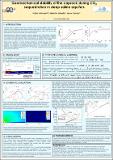Por favor, use este identificador para citar o enlazar a este item:
http://hdl.handle.net/10261/43241COMPARTIR / EXPORTAR:
 SHARE
BASE SHARE
BASE
|
|
| Visualizar otros formatos: MARC | Dublin Core | RDF | ORE | MODS | METS | DIDL | DATACITE | |

| Título: | Geomechanical stability of the caprock during CO2 sequestration in deep saline aquifers |
Autor: | Vilarrasa, Víctor CSIC ORCID ; Olivella, Sebastià; Carrera, Jesús CSIC ORCID | Fecha de publicación: | sep-2010 | Resumen: | Suitable saline aquifers should be capped by a low-permebility caprock. This caprock may undergo large pressure buildup because of CO2 injection. This will affect the stress field and may induce large deformations, which can eventually damage the caprock and open up new flow paths. Hydromechanical (HM) simulations capture phenomena that purely hydraulic (H) codes cannot predict. These include the initial pressure drop in the caprock as a response to CO2 injection (Fig. 1) (Vilarrasa et al., 2010). Furthermore, failure mechanisms strongly depend on the initial stress state (Rutqvist et al., 2008). Unlike open aquifers, in which pressure buildup is limited because brine can migrate out laterally, semi-closed aquifers experience an additional pressure buildup. This additional overpressure depends on the caprock permeability. Relatively permeable caprocks (k<10-18 m2) diminish overpressure because brine can leak through them. | Descripción: | 10th International Conference of Greenhouse Gas Technologies, 19-23 Septiembre 2010, Amsterdam (Holanda). | URI: | http://hdl.handle.net/10261/43241 |
| Aparece en las colecciones: | (IDAEA) Comunicaciones congresos |
Ficheros en este ítem:
| Fichero | Descripción | Tamaño | Formato | |
|---|---|---|---|---|
| Vilarrasa_et_al_GHGT10_Poster.pdf | 363,31 kB | Adobe PDF |  Visualizar/Abrir |
CORE Recommender
Page view(s)
302
checked on 18-abr-2024
Download(s)
209
checked on 18-abr-2024
Google ScholarTM
Check
NOTA: Los ítems de Digital.CSIC están protegidos por copyright, con todos los derechos reservados, a menos que se indique lo contrario.
